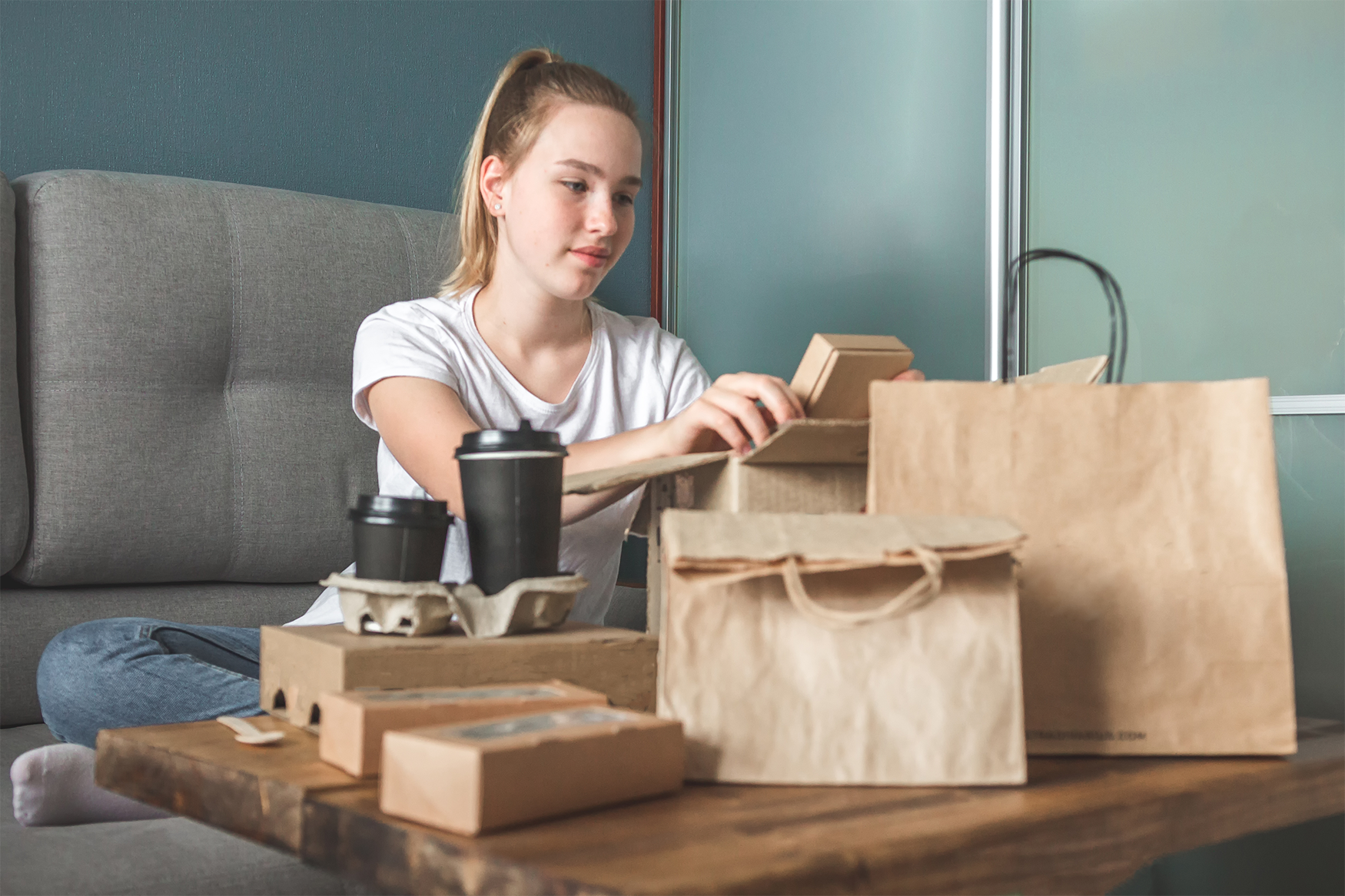E-commerce in the United States grew by 44 percent in 2020, and with that growth came a rise in package deliveries — and the use of paper packaging materials. While the pandemic certainly spurred the increase seen last year, online shopping was already on the rise, meaning demand for paper packaging likely will continue to grow.
This is especially true as consumers learn more about the environmental cost of consumption. In a study of U.S. packaging preferences, former Two Sides North America, Inc. President Phil Reibel said, “Consumers are becoming more aware of available packaging choices for the items they buy, which in turn is influencing packaging decisions by businesses, particularly in the retail sector.”
The 2020 report showed that among the consumers surveyed:
- 57 percent are trying to reduce their use of plastic packaging.
- 57 percent prefer online orders to be delivered in paper packaging instead of plastic.
- 70 percent want online orders to be delivered in right-sized packages that don’t waste empty space.
- 66 percent believe paper or corrugated is better for the environment than other packaging materials.
- 69 percent choose paper or corrugated because it is compostable at home.
- More than 50 percent think paper is easier to recycle, less expensive, and lighter weight than other packaging materials.
- 38 percent would even be willing to spend more on a product if it were packaged sustainably.
Changing attitudes toward sustainable, paper-based packaging has set the stage for Domtar’s entrance into the 100-percent recycled containerboard market. Our Kingsport Mill conversion will allow us to produce 600,000 tons of high-quality containerboard and paper packaging products every year.
Kingsport Mill Responds to Consumer Trends
Steve Henry, Domtar’s senior vice president of packaging, says that the company’s decision to produce containerboard is a natural response to consumer preferences.

“We’ve been watching the megatrends, and we know the world as a whole wants to shift more of their packaging to sustainable, paper-based packaging materials, so that was a key element in our decision to move into this space,” says Henry. “Containerboard will be the largest market that we focus on, but we’re also exploring other paper-based packaging materials that can be made into filler, bags and padded mailers.”
The Kingsport Mill conversion is a great example of a circular economy. We’re reusing construction materials from the renovation as fill for the new construction. Our raw materials will be recycled corrugated packaging and other paper waste. Materials that can’t be recycled will be used to generate steam and electricity for the mill. Also, we are significantly reducing our water usage.
In addition, the containerboard and other packaging materials produced at Kingsport will be sent to independent corrugated converters who are developing innovative, sustainable solutions, such as lightweight, right-sized shipping and product packaging, to meet consumer demand.
The great news is that all of these recycled packaging solutions for boxes, bags and other specialty products can be reclaimed and recycled into even more certified, sustainable containerboard, keeping the cycle going.
Paper Packaging: A Recycling Success Story
A recent Two Sides North America survey entitled “Paper’s Place in a Post-Pandemic World” found that despite clear desire for more sustainable packaging solutions, consumers still need help understanding just how sustainable paper can be.
“More and more consumers are factoring environmental impacts into their purchasing decisions, but all too often those decisions are based on pop culture myths and sensational, headline-driven journalism rather than fact,” says current Two Sides North America President Kathi Rowzie. “As attention turns to developing a more sustainable, circular economy, the paper and paper-based packaging industry has a great fact-based environmental story to tell: Paper is one of the few products that can already claim to have a truly circular life cycle.”
The survey results, published in April, show that only 11 percent of consumers believe the U.S. recycling rate exceeds 60 percent, and nearly 25 percent believe it’s less than 20 percent.
In fact, according to the American Forest and Paper Association, nearly two-thirds of all paper and paper-based packaging in the United States is recycled, and when it comes to corrugated cardboard, nearly 90 percent is recycled.
“We have a responsibility to continue to raise awareness,” says Henry. “We’re very proud that the work we’re doing could push recovery rates even higher. We see more and more opportunities for paper to replace plastic. We are engaging with our neighboring communities for more recycling solutions. Domtar is proud to provide more sustainable packaging material for our communities and the planet.”
